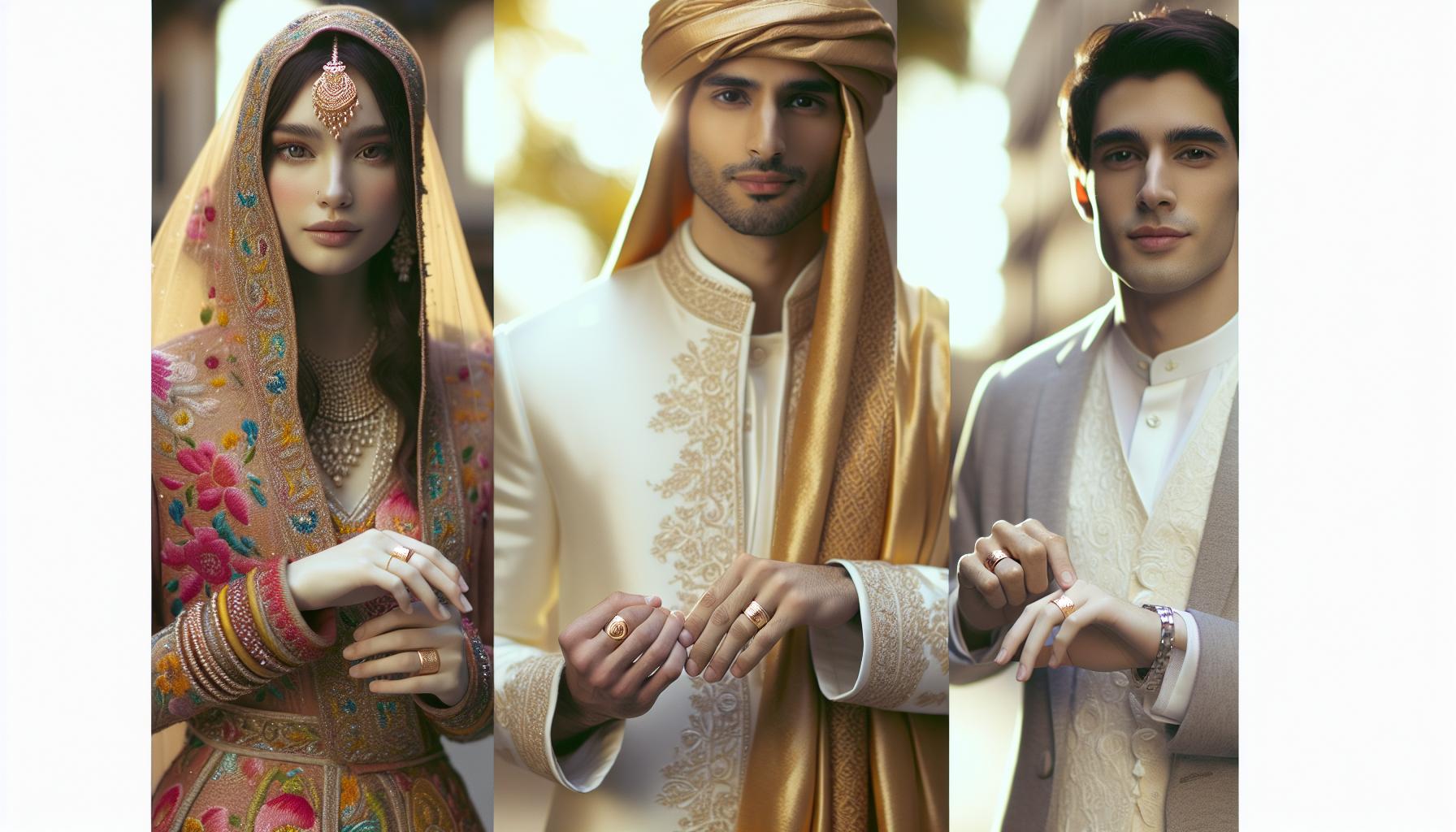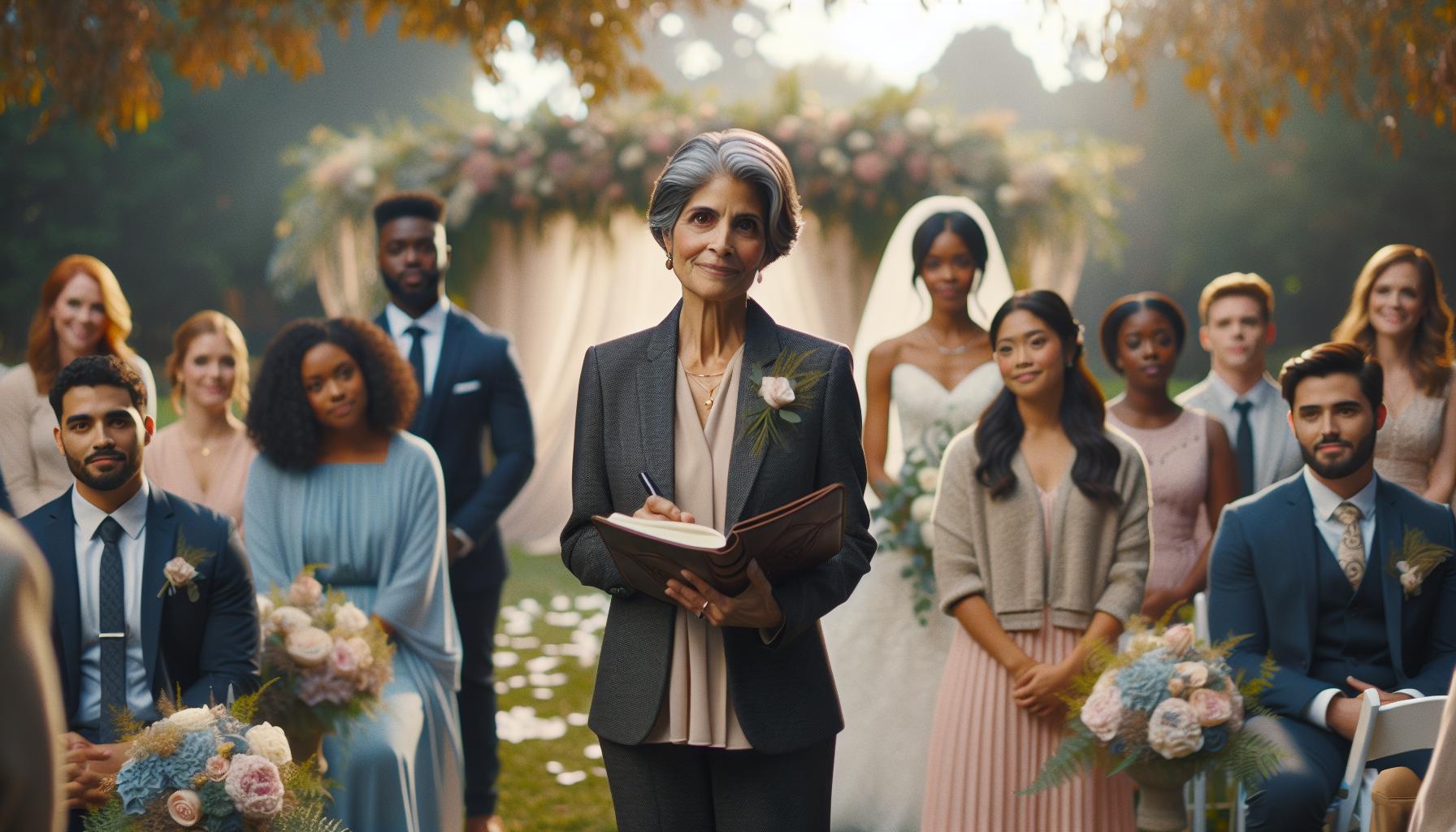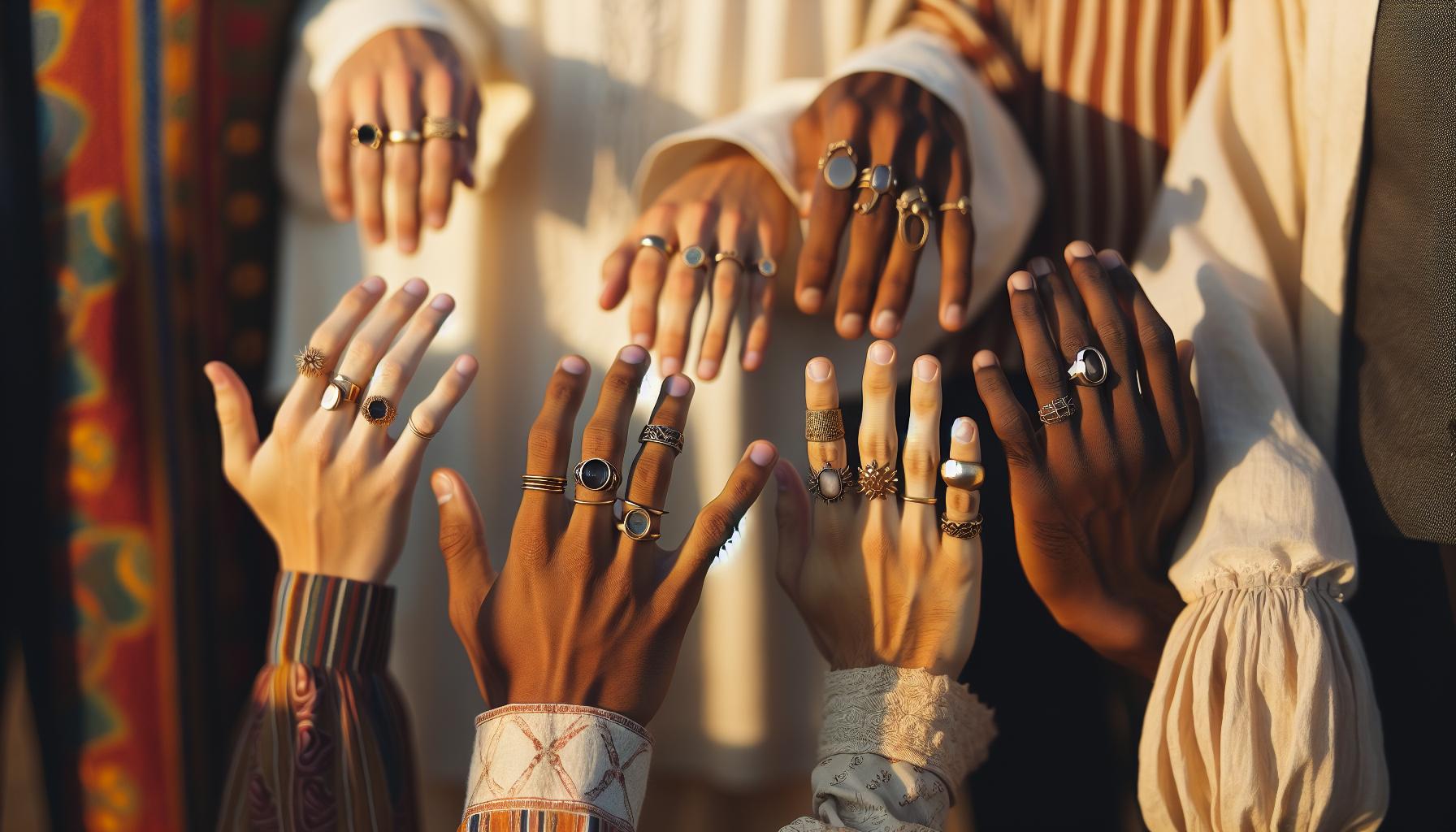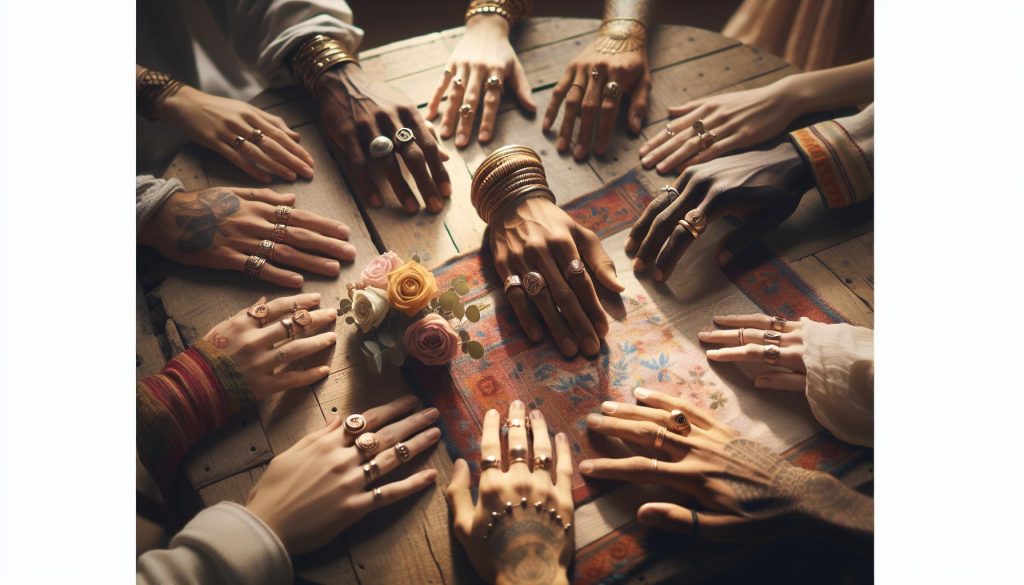Did you know that the placement of a wedding ring varies greatly across cultures? While many opt for the traditional left-hand ring finger, others have unique customs that reflect their heritage and beliefs. Understanding where to wear your wedding ring can enrich your ceremony and deepen the significance of your vows. This article explores the diverse traditions surrounding finger placement around the world, helping you discover not only the reasons behind these customs but also how they can honor your personal relationship. Join us on this journey to learn more about how love is symbolized through ring placement and let these insights guide you in making decisions that resonate with your values and commitments.
Where Wedding Rings Are Worn Worldwide
In various cultures around the globe, the placement of wedding rings holds deep meanings and traditions. The significance of where a ring is worn often reflects the values and practices of a community, revealing the connection between love, commitment, and custom. For example, in many Western cultures, it is customary for the wedding ring to be worn on the fourth finger of the left hand, often believed to be the “vena amoris,” or the vein of love, which supposedly runs directly to the heart. This practice symbolizes a direct connection between the couple and their everlasting bond.
In contrast, some cultures prefer different placements that align with their historical customs. In countries like India, brides traditionally wear their wedding rings on their right hand, emphasizing the importance of tradition and familial ties. In Scandinavian countries, both partners often wear their wedding bands on their left hand but may switch them to the right hand after the wedding ceremony, showcasing a collective bond. Furthermore, in Jewish tradition, the wedding ring is traditionally placed on the index finger during the ceremony and later moved to the ring finger, symbolizing the transition from single life to married life.
Exploring the traditions of different countries reveals intriguing variations. For instance, in Greece, engagement rings are worn on the left hand, like in many Western cultures, but during the wedding ceremony, they are moved to the right hand. Meanwhile, in some African cultures, a couple may opt for multiple rings, exchanging different rings for each stage of their relationship, which marks different milestones in their shared journey.
As weddings increasingly embrace contemporary interpretations of tradition, many couples explore alternative placements or even choose to go ring-less altogether. This shift encourages personalization in wedding practices, allowing individuals to express their unique love stories. Ultimately, the decision of where to wear a wedding ring can reflect personal significance, making it a beautiful symbol of love that transcends geographic boundaries and cultural expectations.
Cultural Significance of Wedding Ring Placement

Marriage traditions worldwide are deeply interwoven with the , transforming a simple piece of jewelry into a profound symbol of love, commitment, and belonging. The way rings are worn not only signifies marital status but also embodies the values and beliefs unique to each culture. This practice is often rich in history, offering a glimpse into the heart of relationships that span generations, making even the smallest detail an essential part of a couple’s narrative.
In many Western societies, the left hand’s fourth finger is the favored choice, grounded in the belief that it houses the “vena amoris,” or the vein of love, theoretically connecting directly to the heart. This tradition serves to symbolize the couple’s unity and eternal love, making it a poignant part of wedding ceremonies. Meanwhile, other cultures, such as those in India and many Middle Eastern communities, traditionally adorn the right hand with wedding rings. This choice reflects cultural values, emphasizing the role of family, tradition, and sometimes religious significance in the union.
Moreover, some regions, such as Greece, adapt these practices further, moving engagement rings from one hand to the other during the wedding itself, reflecting a transition that is both ceremonial and practical. Alternative customs can be seen in African cultures where multiple rings may be exchanged at different life stages, celebrating milestones in a couple’s journey rather than fixating solely on the wedding day. These unique approaches allow couples to weave their stories into the fabric of their cultures, enhancing the personal significance behind their chosen finger for wearing a ring.
As you embrace your wedding planning journey, consider the cultural narratives that resonate with you. Whether you’re drawn to a traditional practice or looking to create a modern twist, the placement of your wedding ring can be a meaningful expression of your love story. Ultimately, this tiny circle of metal can encapsulate the complexity of your relationship while celebrating the rich traditions that inform your shared life together.
Traditional Wedding Ring Fingers by Country

In a world rich with diversity and tradition, the placement of wedding rings varies dramatically from one culture to another, each choice telling a unique story about love and commitment. For many Western cultures, placing the wedding band on the left hand’s fourth finger is a time-honored practice, stemming from the belief in the “vena amoris,” or the vein of love. This tradition emphasizes not only a physical connection but also an emotional bond, marking a couple’s unity and devotion in a deeply romantic way.
Moving eastward, countries like India and most Middle Eastern nations observe a different tradition, opting to wear wedding rings on the right hand. This placement signifies cultural values centered around family and community, reinforcing the importance of these relationships in marital life. Moreover, in India, the wedding ring is often accompanied by more elaborate ceremonies, including the exchange of mangalsutra, a sacred thread that further roots the marital bond in tradition.
In Greece, a fascinating custom involves the transfer of the engagement ring from the right hand to the left during the wedding ceremony, symbolizing a significant transition in the relationship. This act exemplifies how the placement of the ring can encapsulate a journey, making each swap a potent reminder of commitment. In some African cultures, the tradition expands even further, where couples may exchange multiple rings through different life stages, celebrating their evolving relationship and milestones together.
Whether you lean towards a traditional practice or feel inspired to make a personal statement, understanding these diverse customs can enrich your wedding planning experience. Your choice of finger-whether the left or the right-can become an integral part of your love story, reflecting your shared values, heritage, and the unique path you are embarking on together. Select a practice that resonates with your heart, and let your wedding ring serve as a cherished emblem of your everlasting bond.
The Meaning Behind Different Ring Fingers

The diverse world of wedding ring placement reveals deep cultural significance across various societies, each finger chosen often reflects intricate traditions and heartfelt meanings. For instance, in many Western cultures, the choice to wear the wedding ring on the left hand’s fourth finger is steeped in the belief that this finger houses the “vena amoris,” or the vein of love. This symbolic connection not only emphasizes a physical bond but also highlights the emotional and spiritual union between partners. It signifies a couple’s devotion, inviting onlookers to acknowledge their love story through the emblem of a ring.
Conversely, in regions such as India and parts of the Middle East, the right hand is preferred for wedding rings. This choice is not just a personal preference but also manifests cultural values that place a strong emphasis on family and community ties. Here, the ring can serve as an announcement of marital status, but it often accompanies other significant symbols, like the mangalsutra, which denote the sanctity and multifaceted layers of the matrimonial bond.
Across cultures, special practices further enrich the meaning of ring placement. In Greece, couples experience a poignant ritual where the engagement ring is transferred from the right hand to the left during their wedding ceremony, symbolizing their newfound status as a married couple. Similarly, in certain African cultures, wedding rings are layered with deeper significance as couples may exchange multiple rings at different life stages, representing growth and change within the relationship. Such customs remind us that each ring exchange is not merely a ritual but a reflection of the couple’s journey, milestones, and love languages.
Ultimately, the decision of which finger to wear your wedding ring on is more than a fashion choice; it’s a reflection of shared values, heritage, and the kind of narrative you want to tell about your love. Couples embarking on this journey should consider not just the visual appeal of their rings but also the profound meaning that the placement holds within their own love story and cultural contexts. Whether you adopt a traditional practice or carve out your own path, let your choice resonate with what feels right for both of you, embodying the eternal commitment that your wedding ring represents.
Alternatives to Traditional Wedding Ring Placement
Exploring creative opens a world of possibilities for couples looking to express their unique love story. While the classic choices-like the left hand’s fourth finger in the West-have deep cultural roots, many couples are embracing unconventional placements that resonate with their personal style and beliefs. Whether it’s choosing a different finger, a symbolic accessory, or even a completely different item, there’s room for individual expression in the way couples wear their commitment.
One popular alternative is to opt for the right hand, which is traditionally favored in countries like India and Russia. For those who might feel that traditional placements don’t resonate with their identity or lifestyle, wearing the ring on the right hand offers a meaningful, yet fresh perspective. It signifies the same commitment while standing out as a personal choice. Some couples even choose to wear their wedding bands on a chain around their necks, creating a more personal connection that they can keep close to their hearts. This approach not only allows for comfort but also balances traditional symbolism with modern practicality.
Additionally, couples are increasingly exploring dual-ring setups, where both partners wear their rings on different fingers or hands. This can symbolize individuality and partnership simultaneously. It presents an exciting canvas to mix and match styles, metals, or gemstones, allowing each partner to reflect their uniqueness while sharing a common thread of commitment. Wearing rings as bracelets or stacking them with other symbolic jewelry is another fabulous trend that encourages playfulness and customization.
Ensure Your Choice Feels Right
Regardless of the placement, what matters most is that it reflects your love journey and feels right for both partners. Embracing non-traditional options can be liberating and enriching, allowing couples to create their own symbols of love. In doing so, you not only honor cultural significance but also empower yourselves to define what commitment means in your relationship, paving the way for cherished memories and shared milestones on this journey together.
Choosing the Right Finger for Your Ring

Choosing the right finger for your wedding ring is more than just a style choice; it’s a deeply personal decision that reflects your love story and cultural background. Across the globe, couples have different traditions and meanings associated with the placement of their wedding rings, which can influence how you approach your own ring-wearing journey. While many Western cultures often place the band on the fourth finger of the left hand, known as the “ring finger,” other countries like India and Russia may opt for the right hand, showcasing the rich tapestry of wedding traditions worldwide.
When selecting the finger for your wedding ring, consider the symbolism each finger holds. The ring finger, especially in Western cultures, is traditionally associated with love and commitment, believed to be connected directly to the heart through the vein known as the “vena amoris.” Meanwhile, the right hand can signify a more personal choice, often connected to relationships that prioritize individuality alongside partnership. Additionally, some couples choose alternatives, such as stacking rings on different fingers or wearing their bands on a chain around their necks, allowing for a unique expression of their bond.
It’s also essential to think about practicality and personal comfort. If you lead an active lifestyle or work with your hands frequently, you might find wearing a ring on a different finger or opting for a fit that accommodates your daily routine to be beneficial. Some may prefer wearing their rings interchangeably, allowing for flexibility depending on the occasion. The decision can also be influenced by factors such as religious beliefs, family traditions, or even simple aesthetic preferences, making the choice uniquely yours.
In the end, whether you adhere to tradition or forge your own path, the most important factor is that the choice resonates with both partners. This significance not only ensures that the rings are meaningful but also reinforces the commitment you share. Embrace this choice as part of your wedding journey, celebrating the ways it reflects your love and individuality. As love knows no bounds, let your fingers tell your unique narrative, echoing the joyful promise you make to one another.
Festive Variations: Wedding Rings and Celebrations
Amid the joyful atmospheres of weddings, the placement of wedding rings takes on an air of festive significance that varies beautifully across cultures. In many celebrations, the act of exchanging rings symbolizes the couple’s deep commitment and love, but how and where these rings are worn often becomes an integral part of the festivities. From elaborate ceremonies in grand venues to intimate gatherings in backyards, the placement of wedding rings around the world reflects the diversity of traditions, each carrying its own story and cultural nuance.
In some countries, such as Italy and Spain, brides and grooms wear their wedding bands on the right hand, symbolizing a union that is both dynamic and profound. This choice often highlights the importance of individuality in marital relationships, allowing for a personal touch amidst the universal themes of love and commitment. By contrast, in many Western nations, the left hand’s fourth finger, revered as the “ring finger,” is often seen as the traditional choice, believed to connect directly to the heart. This small yet significant detail can embellish ceremonies with rich symbolism, celebrating the idea that love is not only a bond but a journey shared.
Festive customs can also accentuate the significance of wedding rings in unique ways. For instance, in Hindu weddings, the ritual of exchanging rings is often accompanied by colorful celebrations, with vibrant mehndi patterns adorning the bride’s hands, symbolizing joy and prosperity. Similarly, in Jewish traditions, the simplicity of a plain band during the ceremony embodies purity and eternal love, reinforcing the importance of the moment with each heartfelt exchange. Couples might also opt for personalized ceremonies that incorporate unique symbols or gestures, infusing their celebrations with individuality.
When selecting a ring placement that resonates with cultural and personal significance, consider how it harmonizes with your ceremony. Are you inspired by traditions that celebrate love in unique ways? Think about incorporating elements that honor both your heritage and your individual style. Remember that the goal is not just to follow traditions for tradition’s sake, but to weave your own narrative within the rich tapestry of wedding customs. Embrace the festive nature of your wedding journey by making choices that are reflective of your shared story, allowing each ring placement to encapsulate the joyous spirit of your union.
Gender Differences in Wedding Ring Placement
In the vibrant tapestry of wedding traditions worldwide, the placement of wedding rings often highlights distinct gender differences that reflect cultural and social norms. In many cultures, men and women may wear their rings on different fingers or hands, each carrying its unique significance. For instance, in the United States and many Western countries, it is customary for women to wear their engagement and wedding rings on the left hand’s fourth finger, while men traditionally wear their rings on the same finger or opt for the right hand. This divergence can symbolize differing cultural perceptions of love and commitment across genders, with women often enjoying a more elaborate presentation of their rings.
The choice of finger may also change with geography; in some European countries, both partners wear their wedding bands on the right hand. For example, in Germany and the Netherlands, it’s common for couples to start by wearing the engagement ring on the left and move it to the right after marriage, reflecting the transition into a new phase of commitment. This practice not only celebrates the union but showcases individual choices within a shared bond, supporting a narrative that each couple uniquely defines their commitment.
Embracing Unconventional Choices
While traditional practices dominate, a growing number of couples are embracing non-binary and gender-neutral approaches to wedding ring placement. Some couples choose to forgo specific placement altogether, opting instead for a style or design that best represents their union, regardless of gender conventions. This modern perspective encourages individual expression and highlights that the placement of the ring-whether on a finger or even around the neck-should resonate with the couple’s identity rather than societal expectations.
For couples planning their weddings, exploring these gender differences can offer a rich tapestry of choices when considering how to signify their commitment. Incorporating personal preferences and beliefs into ring placement not only honors their love story but also fosters inclusivity and reflects the broader evolution of wedding customs. As you navigate these choices, remember that the journey of planning your ceremony should reflect your unique love story, allowing the rings to serve as a cherished emblem of partnership that celebrates both individual heritage and joint aspirations.
Modern Trends in Wedding Ring Wearing
The evolution of wedding ring customs reflects a vibrant interplay of culture, individuality, and modern sensibilities, making the way couples choose to wear their rings more exciting than ever. Couples today are increasingly stepping away from traditional norms to express their unique identities and relationships. In contemporary society, the significance of a wedding ring transcends its mere placement; it becomes a powerful symbol of love and commitment that can defy conventions.
Many couples now opt for unconventional placements, showcasing their rings on fingers that may not traditionally be associated with wedding bands. For instance, some people choose to wear their rings on the middle or index fingers, allowing for a personal touch that reflects their character or lifestyle. This shift towards bespoke choices encourages individuals to embrace what feels right for them, rather than simply conforming to societal expectations. Additionally, alternative styles such as stacking rings have gained popularity, enabling partners to wear multiple bands or rings that collectively tell their love story.
The rise of gender-neutral and non-binary options in ring wearing is another notable trend. Many couples are moving beyond traditional gender designations, opting for shared bands or choosing rings that blend design elements typically marketed to different genders. This inclusive approach not only symbolizes partnership but also resonates with the contemporary emphasis on equality and shared identity in relationships.
Moreover, modern technology and artistry in jewelry design play substantial roles in shaping these trends. Couples can customize their wedding rings with engraving, unique gemstones, or mixed materials to reflect personal stories and histories. As eco-consciousness grows, many are also turning to ethically sourced materials, seeking to ensure that their tokens of love have a positive impact not just on their relationship, but also on the world. Ultimately, the discussion around is one of openness and creativity, inviting couples to celebrate their love in ways that genuinely resonate with who they are.
The Impact of Religion on Ring Traditions
Different cultures around the world have imbued wedding ring traditions with rich meanings, frequently reflecting religious beliefs and practices that shape how love and commitment are symbolized. For many, the rituals surrounding the exchange of rings are more than mere formalities; they often intertwine deeply with spiritual significance, dictating not just the materials used or the presentation but also the specific fingers on which the rings are worn.
In Christianity, the practice of wearing wedding rings on the fourth finger of the left hand is prevalent, stemming from the belief that a vein in this finger leads directly to the heart. This symbolic connection amplifies the emotional ties of marriage. During the wedding ceremony, the couple often recites vows while placing the rings on each other’s fingers, imbuing the act with spiritual affirmation. In contrast, some Eastern Orthodox traditions call for the right hand to bear the wedding bands, emphasizing the importance of family and an earthly connection in the union.
Hindu wedding rituals also carry significant meanings regarding ring placement. In many Hindu traditions, the groom may place a mangalsutra around the bride’s neck rather than use a ring, symbolizing her marital status and the spiritual bond between the couple. If rings are exchanged, they are typically worn on the left hand, which is viewed as auspicious. For Muslims, while the wedding ring may not play a role in the ceremony, when rings are used, they may be worn on the right hand, reinforcing the notion of sincerity and fidelity within the union.
Moreover, incorporating rings into marriage traditions goes beyond individual faiths; it often plays a role in community identity. In Jewish tradition, the bride usually receives a simple gold band without embellishments, signifying the purity of the relationship. The ring is placed on the index finger or, sometimes, the ring finger, reflecting personal preference and can also hint at the couple’s cultural background.
It’s essential to remember that as couples navigate these traditions, they can blend or personalize these practices to reflect their unique identities and values. In this way, illustrates a beautiful tapestry of beliefs that can inspire couples to honor their faith while also celebrating their own love story.
Tips for Customizing Your Wedding Ring Placement
Finding the perfect place for your wedding ring is not just about tradition; it’s about creating meaningful connections that resonate with you and your partner. Many couples today are embracing personalization in their wedding ceremonies, including how and where they choose to wear their rings. This opportunity for customization lets you reflect on your unique values, preferences, and cultural backgrounds, bringing a special touch to your commitment.
One of the first things to consider is the cultural significance of ring placement in your relationship. Research the traditions from both your and your partner’s backgrounds, as well as those of the cultures that inspire you. For example, while wearing the ring on the fourth finger of the left hand is common in many Western cultures, some couples may opt to wear it on the right hand based on their heritage or personal beliefs. This can also extend to styles of rings-perhaps there’s a unique gemstone or engraving that carries sentimental value which can make your rings distinct.
Engaging in open discussion with each other can pave the way for a sustainable choice. Ask yourselves what rings symbolize for each of you. Would you prefer to wear the rings on your left hand traditionally, or would you like a twist, such as wearing them on a different finger or even as pendants? It’s essential to reflect on how these placements will feel in your day-to-day lives. For those who work with their hands a lot, selecting a more durable and practical option may be the priority, or considering alternative styles, such as stacking rings to symbolize your union.
Moreover, don’t hesitate to express your creativity in designing your ring placement and evolving traditions. For instance, during your wedding ceremony, consider sharing a personal pledge before placing the rings on each other’s fingers. This approach emphasizes the emotion behind the act and can be uniquely meaningful, whether you’re echoing a traditional ceremony or writing your vows together.
This personal touch honors the essence of your love story while celebrating the melding of traditions and modern preferences. By thoughtfully considering how to customize your wedding ring placement, you not only enhance your ceremony’s significance but also create lasting memories that will define your journey together.
Navigating Family Traditions and Expectations
can be one of the most intricate parts of wedding planning, especially when it comes to the symbolism and placement of wedding rings. Each family might have its own set of customs passed down through generations, and discussing these openly can lead to a richer understanding of what the act of exchanging rings means within your family units. The key is to maintain a balance between honoring these traditions and making your wedding uniquely yours.
Many couples find that involving family in these conversations can be both enlightening and uplifting. For instance, explore the possibility of incorporating a meaningful family tradition or even a special family heirloom into your ring ceremony. This could mean wearing a beloved ring that belonged to a grandmother or using a family gem in a custom design. Such choices not only pay homage to your lineage but also forge a connection between past and present, enriching the narrative of your union.
While traditions provide a comforting sense of familiarity, they should not feel binding. It’s essential to foster an environment where both partners feel encouraged to express their preferences. Consider creating a family discussion around the topic, where everyone can share their thoughts and might even lead to discovering a new tradition that feels right for both of you. Compromise is often the name of the game; perhaps one of you will wear the wedding ring on the traditional finger, while the other opts for a different placement that feels more comfortable and personal.
Remember, communication is critical throughout this process. Approach these discussions with love and openness, keeping in mind everyone’s feelings while ensuring that your choices reflect your own relationship. Ultimately, the ring placement is a beautiful part of your journey together-a symbol of love, commitment, and the intricate tapestry of family stories that you are weaving together. Balancing familial expectations with your own desires can lead to a ceremony that truly reflects who you are as a couple, making the moment even more special and memorable.
Frequently Asked Questions
Q: Where do wedding rings go on the finger in different cultures?
A: Wedding ring placement varies globally, with many cultures opting for the fourth finger of the left hand, believed to have a vein directly linked to the heart. However, some countries, like Germany and Russia, place rings on the right hand. Understanding these variations enriches cultural appreciation and personal choices for ring placement.
Q: Why is the left hand traditionally chosen for wedding rings?
A: The left hand is often chosen for wedding rings due to the ancient belief that it has a direct vein to the heart, also known as the “vena amoris.” This symbolism represents love and commitment, making it a meaningful choice for couples exchanging rings during their wedding ceremonies.
Q: What finger do couples wear wedding rings on in same-sex marriages?
A: In same-sex marriages, individuals often choose to wear wedding rings on the same fingers as heterosexual couples, typically the fourth finger, whether on the left or right hand, based on personal preferences and cultural norms. The choice is deeply personal, reflecting the couple’s unique identity and love story.
Q: Are there alternatives to traditional wedding ring placement?
A: Yes, many couples explore alternative ring placements, such as wearing the wedding ring on a necklace or in a different finger combination. This practice can reflect personal style or cultural significance, offering couples the flexibility to define their own marital symbols uniquely.
Q: How has modern society influenced wedding ring wearing trends?
A: Modern society has seen a shift in wedding ring traditions, with couples often opting for unique placements, custom designs, or alternative styles to reflect their individuality. Social media and celebrity influence encourage diverse practices, making personal branding and authenticity key trends in wedding rings today.
Q: What does wearing a wedding ring on the right hand signify?
A: Wearing a wedding ring on the right hand often signifies different cultural beliefs or personal choices. In some countries, such as Greece and India, it is customary. It may also indicate a non-traditional approach to relationships, allowing couples to define their commitment on their own terms.
Q: How can family traditions impact wedding ring placement?
A: Family traditions can significantly impact wedding ring placement, with cultural heritage and familial customs influencing a couple’s decision. Respecting these traditions while blending them with personal preferences allows couples to honor their backgrounds and create a meaningful wedding experience.
Q: When is it appropriate to change the position of a wedding ring?
A: Changing the position of a wedding ring is appropriate during significant life changes, such as remarriage or after a divorce. Some may also choose to change ring placement due to lifestyle changes or fashion preferences. It’s a personal decision that should reflect the individual’s current life stage.
For further exploration of cultural variations and personal significance behind wedding rings, consider reviewing sections on “Traditional Wedding Ring Fingers by Country” and “Cultural Significance of Wedding Ring Placement” in our article.
In Conclusion
Understanding where to place a wedding ring can deepen the significance of your ceremony, aligning with customs from around the globe. Whether you opt for the classic placement on the fourth finger of the left hand or choose a unique tradition, this decision reflects your love story. If you’re curious about other wedding planning essentials, explore our guides on wedding traditions, dress selection, and vendor coordination that can help make your special day memorable.
Don’t forget to check out our wedding registry tips to ensure you receive gifts that truly matter to you. As you finalize your plans, consider subscribing to our newsletter for expert advice and the latest trends in wedding planning. Share your thoughts or experiences in the comments below; your insights could inspire others on their journey. Remember, your wedding day should be a joyful celebration of love, filled with personalized details that resonate with both you and your partner.











